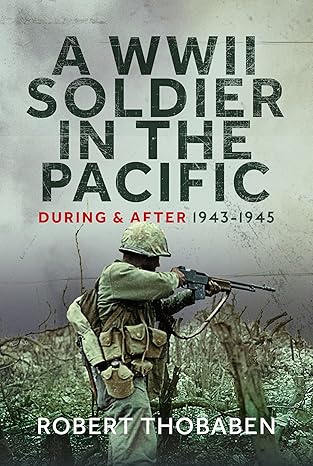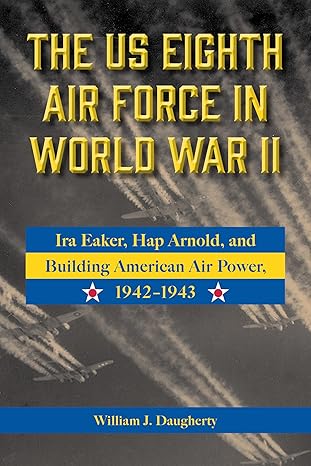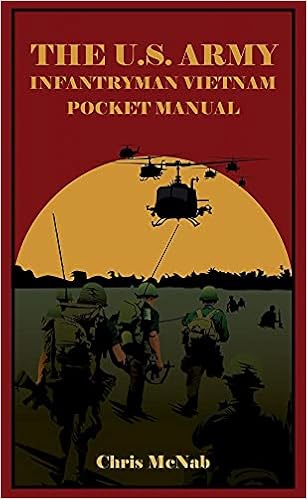Two if by Sea – The New York Naval Militia: Homeland Security’s Nautical Roots - Part 2
By Steven Christopher Ippolito
|
Dedicated to Major General Robert L. Wolf,
New York State Naval Militia, - and - The Patriotic Men and Women of the New York Naval Militia, -- and -- Commander John Joseph Trombetta, Ph.D. (U. S. Navy, Ret.; New York Naval Militia) |
|
In Part I of this series of articles[2], the uniqueness of the New York Naval Militia (NYNM) was illustrated. The NYNM not only spans the length and breadth of the homeland security continuum, it has demonstrated itself capable of interpreting a post-9/11, unified theory of the defense of the homeland (Hamre, 2000; Newmann, 2002, 2011). Subsequent to the al-Qaeda attacks upon the United States, the demarcation between national security and homeland security was erased, in accordance with the new understanding of the security environment – a development that would impose a new set of challenges for military institutions and intelligence organizations, abroad, and domestic law enforcement agencies (Brattenberg, 2012; Hornbarger, 2006; Howard, 2006; Marquis, 2006; Martel, 2012; McDougall, 2010; National Commission, 2004, Newmann, 2002; Stolberg, 2006, 2012; The White House, 2002). One of these organizations, of course, is the Naval Militia of New York.
Thus, the purpose of this second article on the New York State Naval Militia is to demonstrate that, the NYNM serves with patriotic distinction at “’the intersection of evolving threats and hazards with traditional governmental and civic responsibilities for civil defense, emergence response, law enforcement, customs, border control, and immigration,’” as set forth in the 2010 Quadrennial Homeland Security Review Report [3] (Bullock, Haddow, & Coppola, 2013, p. 7). However, in order to understand how the Naval Militia adapted to the new rigors of an increasingly complex strategic picture, it is essential to examine those influences that gave rise not only to the Naval Militia, but also to the concept of militia, itself. The present essay is the second of a series of articles to come devoted to this task.
The Beginnings of the New York Naval Militia
Rooted in a distinctive nautical-legal context, the New York Naval Militia has served the people of New York rather well since its official founding, 23 June 1891, as “the First Battalion, Naval Reserve Artillery” (New York Naval Militia History, 2014, p. 1). Then and now, the variegated character of the naval militia is such, Naval Militia members may find themselves responding to a natural cataclysm on one day, and then deployed to a forward area of a wartime theater of operations, on the next. It is not surprising, therefore, that the NYNM personnel who served in the Spanish-American War, within seven years of the Naval Militia’s founding, guarding the homeland through coastal patrols, or providing additional security for naval shipyards, were also representative of this holistic mix of seagoing warfighters.
The entry of New York militiamen into the Spanish-American War was the result of the curious incident of the U.S.S. Maine (Hagan, 1990; Haunss, 2004; Musicant, 1990). On 15 February 1898, an “explosion…tore open the Maine’s forecastle at 9:40 p.m. that evening” (Hagan, 1991, p. 213). Many Americans at the time believed the Maine was destroyed by a Spanish mine in an overt act of war. “The naval courts of inquiry in Havana, headed by Captains William T. Sampson and French E. Chadwick, also concluded that ‘the Maine was destroyed by a submarine mine, which caused the explosion of two or more magazines” (Hagan, 1991, p. 213). The United States subsequently declared war against Spain -- a controversial matter to the present day -- and the Naval Militia was mobilized for duty.
In the aftermath, Captain J. W. Miller, New York Naval Militia, sent an official report in book form, on 10 October 1898 to the Adjutant General (AG) from Naval Militia Headquarters in New York City (31 Nassau Street, Manhattan, NY) to Naval Militia Headquarters in Albany, NY, describing some of the Naval Militia’s activities: “Sir: I have the honour to submit the following report on the Naval Militia during the war with Spain” (Miller, 1898, p. 3). In part, Captain Miller’s report discussed the deployment and activities of two ironclad, Monitor class vessels, the Jason and the Nahant (Miller, 1898).
The U.S.S. Monitor was the famous “cheese-box-on-a-raft” ironclad vessel made famous during the Civil War, when it clashed with C.S.S. Virginia in an epochal battle at Hampton Roads, Virginia, changing, in the process, the face of naval warfare, going forward (Hagan, 1991). The NYNM’s monitor, Jason, put to sea, 14 May 1898, to complete various patrol duties, in the modern day Bronx area of Throggs Neck, now part of the NYNM’s Southern Command. Of particular interest, however, is Captain Miller’s report of the cruise of another vessel, the U.S.S. Yankee:
| It should be remembered that during April, current opinion as expressed in many newspapers still maintained that the ‘Maine’ had been blown up by an interior explosion, and that the modern battleship was an intricate piece of mechanism which might prove most disastrous to its crew in time of action. Consequently, the Navy found it extremely difficult to obtain recruits and called upon the Naval Militia to man sea-going vessels. New York volunteered for the ‘Yankee’ and this merchant vessel was converted into a man-of-war and placed on her station in eleven days after her crew was mustered into the Navy…She was the first vessel manned by Naval Militiamen to be under fire; the last ship to leave action at the Santiago battle of June 6th; and the naval force of New York was in an engagement before any other volunteer organization of the United States (Miller, 1898, p. 11) (emphasis added). |
On 22 September 1898, Commander W. B. Duncan, Jr., wrote from the U.S.S. New Hampshire to Captain Miller about an action noted in the Log from the U.S.S. Yankee. Duncan’s dispatch, sent to the First Naval Battalion in New York City, described the Yankee’s clash with Spanish vessels, while manned by Naval Militia on 13 June 1898, at 13:15 hours (1:15 p.m.). From the Yankee’s Log:
| We sighted a steamer near the entrance to the harbor, which proved to be a gunboat apparently coming out the harbor to capture what she thought was an American merchantman. We trained our guns aft to keep up the illusion, and started for her at full speed. As soon as we were close enough to her, we opened fire upon her, which she immediately returned with good aim; the forts and batteries at the harbor also opened on us, the shells from both the forts and the gunboats close around us. Another boat, a smaller one, at this time came out of the harbor and assisted the first gunboat and forts; eventually we succeeded in driving both the enemy’s boats into the harbor after a hard fight…During the engagement Landsman Kennedy was seriously wounded. We dropped several shells into the forts, exploding magazine. We afterwards learned from the Cubans that we hit the gunboat, killing four men and wounding seven, and the boat itself had to be beached as soon as it got to the river…Returned to Cienfugegos and continued the blockade of the fort (Miller, 1898, p. 60). |
In any period of conflict, the Naval Militia is “a component military force and part of the State Agency called the Division of Military and Naval Affairs…[and] an integral part of all responses requested by the Governor or the Adjutant General” (Haunss, 2004, p. 19). This efficient response has been enhanced, according to as RADM Robert Rosen, NYNM (Ret.), because the “Naval Militia has a wide variety of skills and capabilities which embrace not only military abilities, but also civilian skills” (Haunss, 2004, p. 19). Thus, the effectiveness of the NYNM is due, in no small measure, to the great reservoir of military experience that is found in the large cadre of “retired flag or general [officers] from the Navy, Marine Corps, and Coast Guard” (Haunss, 2004, p. 19). Trained and experienced warfighters make for effective militiamen. It is, perhaps, the reason that the Naval Militia and the State Defense Forces may well be defined as the heart and soul of what is now called homeland security.
War, Militias, and the Constitutional Context
The concept of militia, including naval militia, represents “a broad-based civic duty to protect one’s fellow citizens from internal and external dangers (Golden, 2013, p. 1021). The Militia Act (1903) “established a federal militia that is bifurcated into two ‘classes’” (Golden, 2013, p. 1034). The Organized federal militia “was defined as the National Guard and the Naval Militia” (Golden, 2013, p. 1034). The Unorganized Militia, open to men, 17 to 45 years of age, represented a state militia whose members were federal militiamen as well (Golden, 2013).
Prior to the 1903 Militia Act, the modern New York Naval Militia was struggling to come to term in 1889 “as a Provisional Naval Battalion” (Haunss, 2004, p. 14). But on 23 June 1891 (see above) the new First Battalion, Naval Reserve Artillery was deployed; during the Spanish-American War, some its members remained at home to defend New York Harbor and the coastlines, while others fought pitched battles with Spanish forces (Hagan, 1991; Miller, 1898). Clearly, the concept, homeland security was not in use at the time, but for all practical purposes, this is the operative concept that was being implemented by the Militia at that time.
Theodore Roosevelt, one time police commissioner of New York City and the future President of the United States, was the Assistant-Secretary of the Navy during the Spanish-American War. On 16 January 1899, he sent the following note to the Legislature of New York: “I have the honor to transmit the Annual Report of the Adjutant-General, the same being for the year 1898” (Annual Report of the Adjutant General of the State of New York, 1899, p. 1). Secretary Roosevelt went on to explain: “The Naval Militia consisted of two battalions each of four divisions, and one separate division” (Annual Report of the Adjutant General, 1899, p. 13). On 4 April 1898, the NYNM created an additional “special division.” However, this “special division,” was an ad-hoc, wartime consideration that was eliminated when peace was declared between Spain and America, “returning that division to a peace footing” (Annual Report, 1899, p. 13).
The Naval Militia Act (1914) subsequently placed “the state organizations under the supervision of the Navy Department” (Haunss, 2004, p. 14). Then, in 1916, the National Defense Act created both the National Naval Volunteers and a New York Naval Militia Marine Company. In those days, a civilian with no military background could join the New York Naval Militia and learn to be sailor (Haunss, 2004). But in the 1950s, the NYNM underwent reorganization where it would come “to parallel the Reserve structure…making it compulsory for almost all New York Naval Militia members to be volunteers from active drilling Naval and Marine Corps Reservists” (Haunss, 2004, p. 14) (emphasis added).
Then, as the century was drawing to a close, Memoranda of Understanding were signed between the Naval Militia, the U.S. Marine Corps, the U.S. Coast Guard, and the U.S. Navy. These organizations agreed “to support…each other’s programs and to coordinate activities closely” (Haunss, 2004, p. 14). As a result, the NYNM became “the Naval Component of the organized militia of the United States, an element of the Department of the Navy” (Haunss, 2004, p. 16). Its mandate, moreover, is constitutionally affirmed by Article 1, Section 8, Clause 1, wherein it is set forth that Congress shall have as one of its powers: “To provide for calling for the Militia to execute the Laws of the Union, suppress Insurrections and repel Invasions” (The U.S. Constitution, 1787, cited in Volkomer, 2011, p. 46). Article 1 of the Constitution also mandates Congress:
| “To provide for organizing, arming, and disciplining, the Militia, and for governing such Part of them as may be employed in the Service of the United States, reserving to the States respectively, the Appointment of the Officers, and the Authority of training the Militia according to the discipline prescribed by Congress (The U.S. Constitution, cited in Volkomer, 2011, p. 46). |
As an organ of state defense, the primary authority for the militia to act, Article 1, Section 10, Clause 3 of the U. S. Constitution, represents the so-called State War Power. This legal provision affords the states an inviolable right to defend themselves against invasion. Beyond all dispute, an entire legal world of meaning and military possibility is brought into being, too, by those three words: inviolable right; militia.
The State War Power
The al-Qaeda attack of 11 September 2001, -- a unique fusion of transnational criminal conspiracy and irregular warfighting -- can rightfully be defined as an invasion (Hoffman, 2010). Thus, entities like the Naval Militia and the State Defense Forces had an inviolable right to defend the homeland, and the lesser American jurisdictions, counties, cities, and infrastructure. Theoretically, the State Defense Forces -- the National Guard, the Reserve Forces, and the various Militias, including the Naval Militia of the impacted states, could have mounted a military defense, pursuant to specific legal and battlefield conditions.
These legal conditions include an attack upon the United States by a foreign political power, though as will be seen, this does not mean specifically a foreign nation state. Secondarily, it entails not simply attack, but subsequent government impairment as well -- an inability on behalf of the federal government to protect the smaller jurisdictions of the United States. If al-Qaeda had launched a more conventional invasion, leaving the federal government powerless, the State Defense Forces, under the color of authority of the State War Power, would have been empowered to act, militarily, under Article 1, Section 10, Clause 3 of the Constitution (Dwyer, 2012). “This power is independent from federal action’ and it cannot be expunged by a Supremacy claim” (Dwyer, 2012, p. 355).
Militia and the question of invasion.
The word, invasion, “probably existed before 1493, [and was] spelled ‘invasioun,’ meaning assault or attack and borrowed from the Middle French ‘invasion’ and Latin ‘invasionem’ and ‘invasus’” (Dwyer, 2012, p. 323). Hermeneutical analysis also reveals that the word “invade” can be traced to the year, “1491. In Middle French, the word “‘invader,’ is, itself, derived from the Latin, invadere, meaning ‘go into; fall upon; attack’” (Dwyer, 2012, p. 323). Nowadays, “the word ‘invasion’ is most often found, in legal context, within the phrase ‘invasion of privacy,’ generally defined as an unjustified intrusion” (Dwyer, 2012, p. 323) (emphasis added). Thus, invasion, in the context of the State War Power signifies “an intrusion upon the property or rights of another; the entry of a hostile military force, or the hostile entry of a public enemy” (Dwyer, 2012, p. 323).
Today, the invasion of a licit nation-state does not require State-on-State, Nation-on-Nation conflict (Kilcullen, 2004; Stolberg, 2006, 2012). Non-state and virtual state actors have amply demonstrated this strategic change in the International System of the 21st century, as a consequence of such anomalous events as the 9/11 attacks. Indeed, the ability of organizations like al-Qaeda or Hizballah to inflict heavy damage upon the military and civilian sectors of powerful nations points to the dangerous potentiality of these seemingly lesser political units[5] (Kilcullen, 2004).
However, this new reality of the modern security environment was known and understood even in the time of Madison and the Federalist Papers -- and it was a critical understanding in the raison d’être of the militia’s deployment, in the 18th century amongst the Founders. Federalist Paper No. 43, by James Madison, spelled out the federal government’s responsibility towards states, in terms of protection from violence: "To guarantee to every State in the Union a republican form of government; to protect each of them against invasion; and on application of the legislature, or of the executive (when the legislature cannot be convened), against domestic violence" (Point 6; Dwyer, 2012).
James Madison in his writings referenced the difficult matter of 18th century Virginia, and the depredations committed by smugglers (Dwyer, 2012). Not only were the smugglers engaged in criminal activities on American soil, they were also actively engaged, according to Madison, in an act of invasion, not generally defined as war, then or now (Dwyer, 2012). Invasion, as a Madisonian term of art for 18th century smugglers, could be applied to modern, foreign drug cartel members operating on American soil, as well as transnational terrorists like al-Qaeda (Kilcullen, 2004). The smugglers in Virginia Madison described – not unlike some modern transnational drug cartels -- were sufficiently powerful to frustrate legal authority, evade capture, and to prevent control or elimination by civil authorities.
Modern governments in such places as Mexico, Colombia, and Sicily – have all suffered similar violence and depredations from organized criminal entities since the 20th century and today, too. Such large-scale criminal conspiracies have been able, at times, to rival and challenge the power of national governments. James Madison’s reference to Virginia and its struggle with smuggler represented not only a contemporary law enforcement problem, but a de facto attack or invasion as well: “the invasion by smugglers [which] necessitated calling the militia under the service of the federal government, to suppress their illegal activities, in order to fulfill the Guarantee Clause” (Dwyer, 2012, p. 324).
Contemporaneously, modern interpretations by American courts in such cases as California v. United States, 104 F.3d 1086, 1091 (9th Cir. 1997), have understood Madison’s notion of invasion as hostility, emanating from a ‘”political entity’” (Dywer, 2012, p. 324) (emphasis added). Political entities like Hamas, Hizballah, and al-Qaeda -- or the more recent activities of groups like the Islamic State (ISIS) in Iraq and Syria – similarly carry out untoward criminal-terrorist operations in various countries. In the Madisonian sense, however, these operations, too, could be legally defined as acts of invasion by political entities, that is, virtual states (Bobbitt, 2009; Dwyer, 2012; Kilcullen, 2004). Moreover, the viability of such groups is even more dramatically illustrated when they engage in the dispensation of social services, the exercise of political functions and power in the territory they control in their home countries, or countries they have come to dominate by force and coercion (Dwyer, 2012; Kilcullen, 2004). Thus, a terrorist group, even a powerful organized criminal entity, can demonstrate de facto political power, despite the fact that its legal status “is not synonymous with nation-state” (Dwyer, 2012, p. 324) (emphasis added).
Virtual States and War
Additional proof that virtual states like al-Qaeda, Hizballah, and Hamas are de facto political entities is gleaned in the grand strategic manner that such groups blend ends, ways, and means, in the manner that licit states pursue goals within the International Order, though these goals can be terroristic in nature and fundamentally criminal (National Commission on Terrorist Attacks, 2004; Stolberg, 2006, 2012). As noted above, a number of modern transnational terrorists, routinely engage in functions usually reserved to licit states; hence, one may properly speak of them as virtual states [6] (Bobbitt, 2009; Flanigan, 2012; Ippolito, 2013; Kilcullen, 2004). The literature also refers to these entities as V-States (Ippolito, 2013b); federated virtual states; parallel hierarchies; insurgent states; and also by terms like insurgent shadow states (Kilcullen, 2004), and parastate cartels (Glenny, 2008).
However, while these political configurations may at times fulfill the functions of states, they may do so while not necessarily in control of territory, a requirement of licit, modern states (Montevideo Convention on the Rights and Duties of States, 2014/1933). In Madison’s view, however, because such political entities (e.g., criminal systems) are capable of invading licit states, a militia has the right to repel them (Dwyer, 2013). Madison would agree that the State Defense Forces, including the various militias, the reserve forces, and the National Guard, all have the authority and right to expel such criminogenic systems, when authorized, in order to protect the homeland from invasion, provided the legal conditions of federal impairment are in effect (Dwyer, 2013). Summarizing, one can parse the meaning of invasion into its fundamental elements, within the meaning of the Constitution. Invasion is the action of:
• A hostile and organized external force;
• A hostile and organized external force conducting a purposeful intrusion on sovereign land;
• A hostile and organized external force conducting a purposeful intrusion on sovereign land in furtherance of a predetermined malicious objective (Dywer, 2012).
However, in the event that a state experiences an actual invasion, Art. 1, Sec.10, Cl. 3, sets forth: “: “No State shall, without the Consent of Congress…engage in War, unless actually invaded, or in such imminent Danger as will not admit of delay” (U.S. Constitution, 1787, cited in Volkomer, 2011, p. 48) (emphasis added). Section 10 lists Constitutional restrictions on the states, vis-à-vis war declarations. From these, however, “it is rather clear that in the event a State is actually invaded, or is in “imminent danger” there exists a de jure “State War Power” (Dwyer, 2012, p. 319). By this power, the State can rise to mount its own legally appropriate defense.
Undeniably, the Framers did not wish the Executive Branch to function as the states’ sole agent defense of the states; the Founders, therefore, articulated a State War Power in the event the national government fails to protect the states under the so-called Guarantee Clause (the Invasion Clause; Art. 4, Sec. 4)[7] . But in the event a foreign power – in this case, a criminal system, or a terrorist system, attacked the homeland, and the government failed to respond -- due to impairment of some kind -- then both the State War Power and the Guarantee-Invasion Clause “are triggered” (Dwyer, 2012, p. 319). State protection becomes the obligation of the State Defense Forces: the National Guard, the Reserve Forces, for example, and the various militias, including the Naval Militia. “The state has a concurrent right to defend itself by engaging in war against the invading force” (Dwyer, 2012, pp. 319-320) (emphasis added).
Tacitly, the states – and the people – have come to assume that the federal government shall uphold its constitutional obligation to fulfill the requirements of the Guarantee Clause. But in the post-9/11 world, by some horrendous catenation of circumstances on the battlefield, “a state may invoke and employ the State War Power” (Dwyer, 2012, p. 329). It is a question of circumstances, definitions, legally and hermeneutically, and the response, if it is to be deemed legal and appropriate, depends entirely upon the meaning, once again, of the word “invasion” and, ultimately, war (Dwyer, 2012, p. 320).
War, Invasion, and the States
The Framers understood the legal character of a war declaration in very specific ways. For the Founders, only the national government could declare war (Dwyer, 2012). This is so because “the power to ‘declare’ war,” for the Founders, “is the power to change the legal relations between the United States and other entities” (Dwyer, 2013, p. 326). Eight years of revolutionary war, the experience of George III’s flagrant disregard of Americans’ natural law rights, and various usurpations and political depredations, left American political philosophers with very definite ideas about the dangers of kings, tyranny and interstate violence.
The Framers, moreover, never assumed that war was a theoretical impossibility between the states and an overweening federal government. Early Americans, like their European ancestors, mistrusted large standing armies in the service of an aggressive, unprincipled leader. Therefore, the Revolutionary generation “regarded the militia as a vital protection against tyranny; militias, therefore, provided provide a ‘check’ on the federal government and a standing army” (Dwyer, 2012, p. 352).
Historically, this idea first appeared in Europe, where “the traditional method of defense for the people was the militia” (Dwyer, 2012, p. 352) (emphasis added). Today, however, the National Guard has assumed the role that once belonged to the militia. But the “National Guard is no longer a militia; rather, it is primarily a national reserve for the regular Army” (Dwyer, 2012, p. 354). This change in status raises an interesting question: can – and should -- the states restore the militia as something separate from the National Guard, under the leadership of the governor? Dwyer (2012) has written that there is no ostensibly legal impediment to such an eventuality.
| The states no longer have the militia the Framers felt was the ultimate protector of liberty…One solution for states to cure this is to reinstitute the original concept of the militia by establishing a force of citizen-soldiers who would be in the service of the state when called upon by the governor to suppress insurrections or repel invasions in times of exigency…By creating state defense forces, states can restore the balance required of federalism and ensure their ability to implement the State War Power (Dwyer, 2012, p. 354). |
The State War Power and the Constitution
In fact and in law, the State War Power supersedes a state’s police powers, but it lacks the legal strength of the federal War Power (Dwyer, 2012; Volkomer, 2013). The various jurisdictions’ war and police powers in the United States derive from a constitutionally mandated balance of power between the various branches of government (Volkomer, 2013). Hence, not even the Commander-in-Chief can declare war – that right exists only in the Congress, in order to promote homeland defense.
The Preamble to the Constitution specified the right of the American polity to engage in self-defense: “We the People of the United States, in Order to form a more perfect Union, establish Justice, insure domestic Tranquility, [and] provide for the common defense” (U.S. Constitution, 1787, cited in Volkomer, 2011, p. 42). Furthermore, Article 1, Sec. 8, Cl. 1 delineated the right of defense in a naval context: “To declare War, grant Letters of Marque and Reprisal, and makes Rules concerning Captures” (U.S. Constitution, 1787, cited in Volkomer, 2011, p. 46).
The State War Power and the Sea
In the years 1775-1776, the national defense did not occur simply on land; homeland defense was very much bound-up with the sea. Sailors, private ship-owners, whalers, and even members of land-based militias, took the fight for freedom into the maritime dimension (Nelson, 2008). Their military point of departure reflects scientific complexity in the systemic sense (Edmunds, 2014; Kilcullen, 2004). The Revolutionary war at sea in New York and New England was frequently an emergent, ad-hoc phenomenon; -- the product of patriotic, though enterprising commercial sailors, operating through the issuance of Letters of Marque and Reprisal (U.S. Constitution, 1787, cited in Volkomer, 2011).
Fighting sailors like John Paul Jones were creative warriors; they linked the strategic means of citizen-centric war and 18th century naval tactics, within an oceanic naval context, to attain the ends of the America’s Revolution. Despite Jones’ reputation amongst some of his detractors in the American War of Independence, as nothing more than a murderer and a pirate, Hagan (1991) has concluded that Jones was an innovative mariner who transcended the brown-water navy of Benedict Arnold at Lake Champlain, in order to engage in blue-water naval war (Hagan, 1991). John Paul Jones’ battles against England ranged across the Caribbean Sea and the Atlantic Ocean, and his record is nothing if not impressive. The commerce-raiding entrepreneur and a fighting sailor organized his battle strategy against the British Empire by means of a well-understood and time-honored approach to 18th century naval warfare: privateering (Hagan, 1991).
Privateering and the Naval Militia Concept
“Privateering was an ancient and honorable way to fight at sea” (Hagan, 1991, p. 16). Once a privateer captain obtained Congressional authorization, through a Letter of Marque and Reprisal, he and his crew had the right to engage and capture enemy vessels (Hagan, 1991). For enterprising men of the sea, privateering represented a form of patriotic capitalism, a martial economic system whose spoils belonged to the privateer captain, his crew, and the American government. Some understood privateering in the Revolutionary period to be naval warfare combined with the style and dash of the buccaneers and corsairs of legend – but for others, privateering was nothing more than sea-going racketeering or piracy. This was clearly the view of some in the Continental Congress.
Some American Congressmen disapproved of privateers. In the hands of practitioners like John Paul Jones; privateering, or so it was thought, could lead to “’Luxury, Extravagance and every kind of Dissipation that tend to the destruction of the morals of a people’” (Hagan, 1991, p. 16). Yet, even John Adams, the most prim and proper of American leaders – the indisputable quintessence of priggish American behavior – overwhelmingly endorsed the practice, and he persuaded the Congress to do the same.
On 2 April 1776, Congress authorized “’private ships of war’…to attack, seize and take the ships…of Great Britain’” (Hagan, 1991, p. 16). At this time, the Superintendent of Finance, Robert Morris performed the functions of a modern Secretary of the Navy, under the title, Agent of Marine; as a result, Morris had overall naval control, pursuant to Congressional authorization, on 8 September 1781 -- Morris would hold this title for the duration of the American Revolution (Hagan, 1991).
Earlier, in 1776, the Naval Committee, also under Morris’ direction, demanded action against the British. Morris’ Committee was frankly impatient with the pace of American maritime warfare, and they “sought decisive action at sea and sectional harmony ashore” (Hagan, 1991, p. 5). To increase the tempo of American warfare at sea, Morris ordered Captain Esek Hopkins and his force of New Englanders to reconnoiter Chesapeake Bay. The Continental Naval Committee under Morris wanted Hopkins to move definitively against an effective British naval leader, Lord Dunsmore and his forces (Hagan, 1991). Therefore, Hopkins was directed “’to search out and attack, take or destroy all the naval forces of our enemies’” (Hagan, 1991, p. 5). However, given the lethality of Lord Dunsmore’s fleet, a veritable naval juggernaut, these orders were easier said than done.
Compounding the Americans’ difficulties, winter had descended upon Cape Hatteras, and Hopkins, a veteran of commerce raiding, was not of a mind to take on the British at sea, particularly in a seasonally complex time of the year. Unfortunately, Hopkins does not appear to have exuded either the self-confidence or energy, and he was not confident that he and his privateers could win. Not surprisingly, Captain Hopkins generated a mixed record as a naval leader, though, generally, his accomplishments were unimpressive. Thus, while Hopkins’ star, inexorably, descended toward its nadir, the fortunes of his energetic and talented subordinate, John Paul Jones, began to reach their zenith. These changes undeniably complicated the personal relations of the two men; but then, as if matters were not problematic enough, Captain Hopkins, presently, found himself not only investigated by Congress, but censured by the government, as well, for “ineptitude” (Hagan, 1991, p. 6).
The naval war for the United States finally came to greater fruition when Morris engaged John Paul Jones’ to replace Hopkins (Hagan, 1991). Now, in John Paul Jones, Robert Morris had found what apparently was lacking in Esek Hopkins -- a highly motivated, and effective privateer. “[Jones] had an enviable record as a commerce raider, having taken more than twenty prizes while commanding the Providence and Alfred” (Hagan, 1991, p. 11). Suitably impressed by Jones’ record of accomplishments against the British, Agent of Marine Morris determined to get Jones into action against the British Navy.
Despite the protestations of Esek Hopkins, Jones received command of Ranger, a sloop-of-war. He was dispatched to bring the war to the British in the “Caribbean, Pensacola, and the mouth of the Mississippi River” (Hagan, 1991, p. 11). Afterwards, Jones, now comfortably ensconced behind the helm of Ranger, prepared to embark for Europe on 1 November 1777. The Ranger arrived safely in France, at a dangerous time of the year, whereupon Jones personally informed Benjamin Franklin and Charles Gravier, Comte de Vergennes, France’s foreign minister, of the American victory at Saratoga, in New York State.
General John (Gentleman Johnny) Burgoyne had been defeated in late October 1777 by the Continental Army. The loss of Burgoyne’s force for the British Crown at Saratoga was a painful one -- Burgoyne surrendered a British force of 5,700 to the Continental Army (Hagan, 1991). Burgoyne’s defeat immediately galvanized the French, who saw a window of strategic opportunity opening in their perennial struggle with the British in the New World. But as a result of the American success in Saratoga, the entire meaning of the war had changed: “The stunning British defeat [of Burgoyne at Saratoga] transformed a colonial revolution into an international war involving Europe’s second greatest naval power, France” (Hagan, 1991, p. 11).
French Intervention in the Revolution at Sea
Vergennes resolved immediately to help the Americans as much as possible. In grand Machiavellian style, the foreign minister saw that success for France in its endless squabbling with England would be benefitted by the independence of the Americans from Great Britain (Hagan, 1991). Thus, lending material support to American privateers, in order to raid British shipping with ease, while protected by French bases, served 18th century French strategic needs in a powerful way. To that end, Vergennes and Franklin signed the Franco-American Treaty of Alliance on 6 February 1778, a development that for John Paul Jones was extremely desirable. The daring privateer could now operate in a transnational theater of operations, and it allowed “the Continental Navy a European base of operations from which John Paul Jones could raid the British Isles” (Hagan, 1991, p. 12). Vergennes also pressed King Louis XVI to outfit 20 ships of the line for sea duty, immediately in the interest of both France and America. Thus, by this accident of history, and the diplomatic initiative of Vergennes and Ben Franklin, Captain Jones, the privateer, would become one of Americans great naval warriors (Hagan, 1991).
Privateering as Naval Adjunct
Privateering, as a tactical approach in the American Revolution, is significant on a number of levels. Military historians, as a rule, do not interpret America’s use of privateering in the Revolutionary naval war, in a context of militia warfare. But there are similarities between the two, just as there are marked differences, too.
Militias are not motivated, economically, in the same way that privateers are; but both are technically civilians fighting for a flag. Militias serve under governors; privateers need official government permission to operate through Letters of Marque, with one eye, of course, on their pocketbook. The militia volunteer is a patriot; he bears America’s burdens willingly, because he is a patriot. His interest is freedom, security, defense, and the existential survival of his State and country. In true American fashion, the militiaman arises directly from the people. He epitomizes a military force of, by, and for the people, in every sense of the term. In all ages and in all conflicts, the militiaman has shouldered America’s military burdens; more to the point, he is America.
The privateer is also a patriot, where patriotism mixes into the dynamics of free-market capitalism. The modern military contractor who gave significant service in Iraq and Afghanistan in recent years is a descendant, loosely speaking, of the 18th century privateer. In fact, within the modern security environment, he or she is a necessary component of a military that nowadays is stretched far too thin. But what primarily characterizes both militiaman and privateer is that both are citizen-soldiers, or, perhaps, citizen-sailors. From this common root that privateer and militiaman flowers on different branches of the martial tree, though in their own distinctive ways. In the hands of sea captains like John Paul Jones and others, the privateer became a sea rover.[8] Captain Jones and his seagoing militia of privateers would even wage war upon the enemy, successfully, and literally upon his own soil!
| Between 14 February and 8 May 1778 Jones landed on English soil and spiked the defending guns at the Irish port of Whitehaven, the first such intrusion in a British seaport since 1667. He next foraged about St. Mary’s Isle hoping to kidnap the absent Earl of Selkirk and exchange him for American sailors held as prisoners by the British. Jones fought, captured, and brought to Brest as a prize H.M.S. Drake, a 20-gun sloop-of-war, and returned to France crowing that his short cruise had shown the British that ‘not all their boasted navy can protect their own coast, and that the scene of distress which they have occasioned in America may soon be brought home to their own shores’” (Hagan, 1991, p. 12). |
The exploits of John Paul Jones’ and his privateering brethren form a powerful chapter in American naval history. Hagan (1991) has estimated that throughout the Revolution, privateers would seize about 600 British ships, with a total estimated economic loss of approximately 18 million dollars. Frequently, supplies were seized for the American Army in this manner, while Britain suffered a disruption of its own armies’ supplies. British merchants also suffered from an increase in its shipping insurance rates, which ultimately undercut “popular support for the war in the mother country” (Hagan, 1991, p. 17).
However, if privateering -- in the hands of private sailors – could be successfully waged in a blue-water combat context, the militia, itself, as an ontological reality would also demonstrate itself to be an elastic, transposable concept. What was originally a land-based concept proved that it could be transposed itself to a maritime dimension. Like the privateer, and the Sea Beggars of the 16th century, the naval militia was fully capable of efficacious and systemic complexity and emergent adaptation (Edmunds, 2014).
| Military activity and “security policy has always been characterized by uncertainty…Likewise, strategy, and particularly strategy in war, must inevitably grapple with complexity owing to the constant interplay of different factors, actions and reactions which comprise evolving strategic circumstances” (Edmunds, 2014, p. 528). |
Through complex interactivity, a maritime martial system was created in New York State. But to understand the present, it is not inappropriate to consider the historical-military background of the militia, from its origins in Europe (post-Roman Empire), to its development in the American Revolution. The militia story would continue, however, through the 19th and 20th centuries, and, finally, in its contemporary usage as an expression of the states’ political life on land and sea, through the agency of land based and naval militia. In Part III, I will argue that understanding the history of the militia concept’s past can help create the future.
| Conclusion |
The uniqueness of the New York State Naval Militia is its capacity to operate within the length and breadth of the homeland security enterprise, within the waters of New York State. This is necessary as a result of the erasure of the line of separation and demarcation between national security from the more recently articulated concept of homeland security. Thus, the purpose of this second article on the New York State Naval Militia is to demonstrate that, the NYNM serves with patriotic distinction at “’the intersection of evolving threats and hazards with traditional governmental and civic responsibilities for civil defense, emergence response, law enforcement, customs, border control, and immigration’” (Bullock et al., 2013, p. 7).
The New York Naval Militia is rooted in a distinctive system of naval and legal traditions, practices, and self-understanding. From its official origins on 23 February 1891, as the First Battalion, Naval Reserve Artillery, to the present day security environment --that has been powerfully impacted by the emergence of non-state actors and virtual states -- the Naval Militia successfully transferred the European-American, land-based militia concept, to the nautical dimension, with highly satisfactory results (Haunss, 2004).
During the Spanish American War, the Naval Militia served with honor and distinction, protecting the homeland, as well as engaging in major naval actions with Spanish capital ships of the period. In fact, the infamous incident of the destruction of the U.S.S. Maine – infamous, perhaps, because it remains a controversial incident that plunged the United States into war, and for reasons that were in all likelihood not justified – was the catalyst that brought the Naval Militia to be mobilized for service.
The concept of militia, including naval militia, represents “a broad-based civic duty to protect one’s fellow citizens from internal and external dangers (Golden, 2013, p. 1021). The Militia Act (1903) “established a federal militia that is bifurcated into two ‘classes’” (Golden, 2013, p. 1034). The Organized federal militia “was defined as the National Guard and the Naval Militia” (Golden, 2013, p. 1034). The Unorganized Militia, open to men, 17 to 45 years of age, represented a state militia whose members were federal militiamen as well (Golden, 2013).
Prior to the 1903 Militia Act, the modern New York Naval Militia was struggling to come to term in 1889 “as a Provisional Naval Battalion” (Haunss, 2004, p. 14). On 23 June 1891 (see above) this unit would enter official service as the First Battalion, Naval Reserve Artillery. Clearly, the concept, homeland security was not in use at the time, but for all practical purposes, this is the operative concept that informed the Militia’s activities at that time.
The Naval Militia Act (1914) subsequently placed “the state organizations under the supervision of the Navy Department” (Haunss, 2004, p. 14). Then, in 1916, the National Defense Act created both the National Naval Volunteers and a New York Naval Militia Marine Company. But in the 1950s, the NYNM underwent reorganization where it would come “to parallel the Reserve structure…making it compulsory for almost all New York Naval Militia members to be volunteers from active drilling Naval and Marine Corps Reservists” (Haunss, 2004, p. 14) (emphasis added).
Then, as the century was drawing to a close, Memoranda of Understanding were signed between the Naval Militia, the U.S. Marine Corps, the U.S. Coast Guard, and the U.S. Navy. These organizations agreed “to support…each other’s programs and to coordinate activities closely” (Haunss, 2004, p. 14). As a result, the NYNM became “the Naval Component of the organized militia of the United States, an element of the Department of the Navy” (Haunss, 2004, p. 16). As a functioning militia, the Naval Militia would engage in specific, time-honored tasks that it continues to perform with great skill.
Historically, one of the purposes of the militia is to resist invasion by hostile powers, which even in the 18th century were understood by such theorists as James Madison, to be organized criminal entities, at times. Militias have the right to engage in war, as per the Constitution, Art. 1, Sec.10, Cl. 3, though they, and the states they serve, lack the ability, naturally, to declare war. The State War Power of the Constitution allows the states to engage in war, if and when the federal government is impaired, and unable to discharge its duty.
Clearly, the Framers did not wish the Executive Branch to function as the states’ sole agent defense of the states. Thus, the Founders articulated a State War Power in the event the national government fails to protect the states under the so-called Guarantee Clause (the Invasion Clause; Art. 4, Sec. 4). But in the event a foreign power – in this case, a criminal system, or a terrorist system, attacked the homeland, and the government failed to respond -- due to impairment of some kind -- then both the State War Power and the Guarantee-Invasion Clause “are triggered” (Dwyer, 2012, p. 319).
However, at the same time, the Framers assumed that war was not a theoretical impossibility between the states and an overweening federal government. It is also the reason that early Americans mistrusted large standing armies in the service of an aggressive, unprincipled leader. The Revolutionary generation “regarded the militia as a vital protection against tyranny; militias, therefore, provided provide a ‘check’ on the federal government and a standing army” (Dwyer, 2012, p. 352).
The concept of a citizen militia would eventually be transferred to the sea, attaining maximum expression in the 19th century development of an official naval militia. But in the 18th century, patriotic citizens and land warriors would take the Revolutionary War to the British in the maritime dimension. Benedict Arnold’s land warriors built ships at Lake Champlain in October 1776, where they fought a major engagement, anticipating a de facto, if not a de jure naval militia, many years hence. At the same time, the whalers and commercial fishermen and sea captains of New York and New England fought with the approbation of the Congress, as well as the Commander-in-Chief, George Washington, during the Revolution. But of all the privateers and irregular warriors of the 18th century, perhaps the best known of the fighting citizen sailors of the time was John Paul Jones whose daring battles with the British – at times, in their own coastal wars -- brought him both fame and infamy from his supporters and his enemies, alike. Thus, in these rather striking influences, the seeds of the present day Naval Militia were sown, the fruit of which continues to bloom, redounding to the safety and security of the citizens of New York. It is, to be sure, a rich martial legacy.
But to understand the present, it is not inappropriate to consider the historical-military background of the militia, from its origins in Europe (post-Roman Empire), to its development in the American Revolution. The militia story would continue, however, through the 19th and 20th centuries, and, finally, in its contemporary usage as an expression of the states’ political life on land and sea, through the agency of land based and naval militia. In Part III to follow, I will argue that understanding the history of the militia concept’s past can help create the future.
In the meantime, the ships of the Naval Militia will remain on station; they will continue to sail and patrol the waters of New York States, fortified by a unique mission statement, and a long tradition of organizational learning. Swimming throughout it all, however, may be something less definable, less tangible, though no less significant: the spectral, dream-like memories of Lake Champlain, the whalers and commercial seamen of New York and New England waging war in the name of freedom utilizing the seagoing skills learned in generations of maritime families who plied their trade in the sea around America. One should not forget the daring combat of John Paul Jones, and unknown privateers who took up America’s cause in their own distinctive ways, nor the contribution of naval militiamen during the Spanish American War, and all other wars where militiamen rose up to defend the United States. Even now, though modern sailors no longer chant to turning capstans, one could memorialize, perhaps, this rich naval legacy in music; and were it possible, a more elegiac and stirring sea shanty could scarcely be imagined.
| * * * |
Show Notes
| * * * |
© 2026 Steven Ippolito
Written by Steven Christopher Ippolito, Ph.D.
About the author:
Dr. Steven Christopher Ippolito, Ph.D., who spent most of his life in Manhattan and the Bronx, New York (Go Yankees!) is a retired law enforcement officer for the State of New York with nearly twenty years experience. A full-time professor of Criminal Justice and Homeland Security at Monroe College, New York City, Steve has two Masters Degrees, one from New York University; the other, from Norwich University, VT., in the very first Military History class of 2007. In August 2017, he earned his Ph.D. from Northcentral University, from the School of Business Administration and Technology, with a specialization in Homeland Security, under Committee Chair, Kimberly Anthony, Ph.D, and Committee member, Meena Clowes, Ph.D. His dissertation was based on mixed-methodological research into the phenomenon of convergence, the intersection of crime, terrorism, war, and other forms of conflict (the crime-terror nexus; crime-terror pipeline), as both a homeland security and educational problem. All his professional research is dedicated to God, Country, and Family, including the wider family of students and academic colleagues. To all of these, and to all first responders, police, fire-fighters, military personnel, emergency medical personnel, homeland security and emergency management operatives, Steve sends best wishes. May God bless America, now and forever!
* Views expressed by contributors are their own and do not necessarily represent those of MilitaryHistoryOnline.com.





























